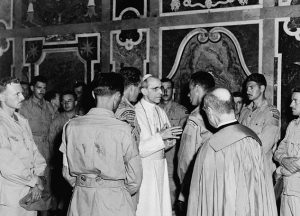Contemporary Church History Quarterly
Volume 25, Number 2 (June 2019)
Review of Michael E. O’Sullivan, Disruptive Power: Catholic Women, Miracles, and Politics in Modern Germany, 1918-1945 (Toronto: University of Toronto Press, 2018), 344 Pp., ISBN: 9781487503437.
By Kevin P. Spicer, Stonehill College
For every Marian apparition approved by the Vatican, such as at Guadalupe, Mexico (1531), La Salette, France (1846), and Lourdes, France (1858), there are numerous that remain under study or are refused recognition by the Church. Nevertheless, the lack of approbation cannot contain the fervor of many believers from seeking an intimate connection with the supernatural or, put in theological terms, miraculous intervention for the relief of malady or burden. In Disruptive Power: Catholic Women, Miracles, and Politics in Modern Germany, Michael E. O’Sullivan, associate professor of history at Marist College in Poughkeepsie, New York, examines the nature and impact of Marian apparitions and the phenomena of stigmatic ecstasies on German Catholicism from the time of the establishment of the Weimar Republic up through the middle of the Federal Republic of Germany.
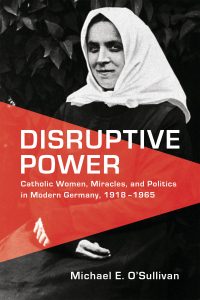 Though these occurrences are notable in nature and unique in theological understanding, they share a supernatural commonality that O’Sullivan recounts as events of “miraculous faith” (4). O’Sullivan rightly argues that historians, even those who specialize in church history, have for too long neglected incidents of miraculous faith in their analysis of German history. In his fascinating study, O’Sullivan endeavors to fill this void. For him, miraculous faith events both reflect and intensify the institutional, political, cultural, and gender tensions within German Catholicism.
Though these occurrences are notable in nature and unique in theological understanding, they share a supernatural commonality that O’Sullivan recounts as events of “miraculous faith” (4). O’Sullivan rightly argues that historians, even those who specialize in church history, have for too long neglected incidents of miraculous faith in their analysis of German history. In his fascinating study, O’Sullivan endeavors to fill this void. For him, miraculous faith events both reflect and intensify the institutional, political, cultural, and gender tensions within German Catholicism.
O’Sullivan concurs with historians, such as Oded Heilbronner, who view post-WWI Catholicism already in decay, documented, in part, by communion statistics and lessening of participation in urban male Catholic associations. At the same time, for O’Sullivan, the miraculous faith events also reveal, “an upsurge in devotion and a revolt by traditionalists against mainstream religious and political leaders that ultimately contributed to the church’s fragmentation and transformation of Christianity’s role in politics” (4). To this end, the events of miraculous faith “disrupted three major elements of German history: religious secularization, Christian politics, and patriarchal gender roles” (4).
Disruptive Power departs from standard secularization theories and posits a “braided,” twisting path of secularization, which O’Sullivan defines as “the process by which religion becomes less central to the world view, mentalities, and institutions that shaped the everyday lives of modern historical subjects” (5). Explaining further, O’Sullivan writes, “secularization followed a hybrid path in the modern age where the secular and sacred existed side by side” (5). To clarify this point, O’Sullivan turns to Robert Orsi’s concept of “lived religion,” which focuses on how generations transmitted, subordinated, or rediscovered devotional practices. According to O’Sullivan, Orsi surmises that “religious worlds, subcultures, and mentalities” need not be portrayed as “isolated and separate from other aspects of society and experience” (8). Rather, twentieth-century German Catholicism reflected German society and its regional differentiation. In this respect, it is incorrect to portray it as a rigid monolith or a single all-encompassing milieu.
Such insight on milieu reflects similar perspectives argued in other recently published works on German Catholicism, most notably by Jeffrey Zalar in Reading and Rebellion in Catholic Germany, 1770-1914. However, O’Sullivan emphasizes the role of milieu much less than Zalar.
More important for O’Sullivan is the conflict among and between competing groups for influence over differentiated Catholic milieus. To illustrate such struggles, O’Sullivan makes use of Pierre Bourdieu’s notion of “‘religious field’ of competition” between clergy and laity over “legitimation and the ‘goods of salvation’” as various groups and individuals vie for power and authority within Catholicism (11). Such applications enable O’Sullivan to make connections between miraculous faith events and the fluctuations of power in and influence of Catholic political parties, especially during Weimar and the Federal Republic of Germany.
Similarly, tensions in ecclesial power play often uncovered cracks in the gender dynamics of the church as religious authority vacillated between traditional female and male ecclesiastical roles. In particular, O’Sullivan makes it clear that he rejects anachronistic portraits of “piously Catholic women” and instead endeavors to present them “as empowered agents negotiating a perilous but evolving patriarchal power structure” (15).
In twentieth-century Germany, the Catholic woman who best negotiated the patriarchal structure of German society and the German Catholic Church was the stigmatic, seer, and mystic, Therese Neumann of Konnersreuth, from Bavaria, in the Regensburg diocese. She serves as the focus of O’Sullivan’s study by offering a lucent example of how “pious women negotiated spheres of power while embracing strict moral codes and paternal hierarchy” (7). Unlike Neumann, lesser-known mystics, such as Anna Maria Goebel, failed to maneuver adroitly through the numerous obstacles facing them and, generally, have been forgotten. By contrast, Neumann is still quite well known. In 2005, after much debate and at least forty-thousand requests, Bishop Gerhard Müller of Regensburg had Therese Neumann declared a “Servant of God” by opening an official beautification process for her (https://www.bistum-regensburg.de/news/eroeffnung-des-seligsprechungs-verfahrens-von-therese-neumann-296/). O’Sullivan’s study uncovers why Therese Neumann and her supporters – commonly identified as the “Konnersreuth Circle” – are unique and so memorable.
In Chapter One, “Germany between Apocalypse and Salvation: Bloody Images and Miraculous Cures,” O’Sullivan describes the rise of events of miraculous faith in post-World War I Germany. Existing Marian pilgrimage sites at Neviges (Ruhr district) and Kevelear (Rhineland) received an upsurge in visitors as Catholics visited them out of a quest for meaning amid a changing political landscape and rising secularism in German society. New events of miraculous faith also took place in Aachen and Bickendorf (Eifel), all of which captured the imagination of German Catholics. In 1920, in Aachen, a visiting excommunicated French priest, Argence Vachère, who had a history of seeing images of Christ and consecrated hosts bleed, together with several lay Catholics, witnessed a picture of Jesus and a religious statue shed blood for several days. This “Blood Miracle” of Aachen also attracted the attention and support of the followers of Barbara Weigand of Schippach (near Würzburg), a mystic, who, following her beatific visions, criticized clerical authority and advocated for a less patriarchal church. Around the same time, in the tiny village of Bickendorf, Anna Maria Goebbel began to endure profuse bleeding and experienced religious visions.
For O’Sullivan, these seemingly disparate phenomena illustrate larger tensions for Catholics in German society. The eccentric unwieldy nature of the mystics made them problematic for the German bishops of their respective dioceses, fearing that they might “jeopardize Catholic attempts to integrate nationally” (29). O’Sullivan argues that the bishops preferred to uphold their hierarchical, patriarchal power structure by organizing their own contained celebration of events of miraculous faith, such as when the Trier diocese placed the Holy Tunic of Christ on display in the summer of 1933. In the chapter’s conclusion, O’Sullivan posits that this struggle over the control of the “goods of salvation” unintentionally “reduced the power of the formal church and its leadership” (52). An interesting claim, one repeated often in the book, but one for which clearer evidence is needed.
In Chapter Two, “The Rise of Therese Neumann of Konnersreuth during the Weimar Republic,” O’Sullivan introduces the miraculous story of Neumann, nicknamed, “Resl.” Beginning in 1926, Neumann experienced the stigmata following years of sickness and personal tragedy. Like clockwork, on Friday afternoons, Neumann would experience “suffering” from a mixture of stigmata, head wounds imitating Jesus’ crown of thorns, and ecstatic visions of Christ’s Passion. Thousands journeyed to her humble family home to wait in line for hours to witness personally the spectacle. Neumann also claimed to subsist solely on consecrated hosts.
Unlike other mystics whose cause floundered, Neumann attracted a powerful group of male supporters who publicly defended her against criticism and doubters. The list of hierophants is significant, including Father Joseph Naber, the pastor of St. Laurentius, the Catholic parish in Konnersreuth; Erwein Freiherr von Aretin, an editor with the Münchener Neueste Nachrichten; Father Franz Xaver Wutz, a professor of Old Testament at the Philosophical-Theological College in Eichstätt; Friedrich von Lama, an eccentric conservative free-lance journalist; and Fritz Gerlich, an author and journalist who subsequently founded the anti-Nazi, Der gerade Weg.
O’Sullivan devotes the greatest attention to Gerlich who left his Calvinist faith and hedonistic lifestyle (yes, the two are mutually contradictory) after meeting Neumann and joined the Catholic Church. He argues that these advocates, along with thousands of other supporters, were able to experience “God directly through Neumann without confession, communion, and other sacramental formalities” (55). In turn, for those Catholics who positively encountered Neumann, she “replaced the church as the primary focus of their prayers and they set their own rules with flexibility regarding official doctrine” (75-76). O’Sullivan repeatedly emphasizes this point about the usurpation of power by Neumann and the Konnersreuth Circle from the institutional Church. Indeed, Neumann’s witness and testimony became the impetus for many individuals to return to the practice of their Catholic faith. Many Catholics also turned toward Neumann to have clearer access to the “sacred.” As O’Sullivan instructs, such avenues fell outside official Church channels, becoming of great concern to the bishops. Nevertheless, while many Catholics sought out the guidance and counsel of Neumann, in the end, they practiced their faith through the traditional sacramental forms of worship—a point that O’Sullivan describes but neglects to make.
In Chapter Three, “Saving Souls and Making Enemies: The Struggle over Konnersreuth and the Downfall of Political Catholicism,” O’Sullivan builds upon Stephen Schloesser’s Jazz Age Catholicism: Mystic Modernism in Postwar Paris, 1919-1933, which examined intellectuals, such as Jacques Maritain and Georges Rouault, who turned to Catholic mysticism to cope with the aftermath of the First World War. O’Sullivan believes the Konnersreuth Circle did the same in Germany. Despite such support, Neumann also encountered numerous critics, including Father Johann Baptist Westermayr, a priest of the archdiocese of Munich and Freising and the Freising seminary rector, and Father Georg Wunderle, a priest of the Eichstätt diocese (O’Sullivan incorrectly identifies him as a Franciscan), a professor of apologetics at the University of Würzburg, and, from 1932-1933, rector of the university [Wolfgang Weiß, “Wunderle, Georg,” BBKL 36 (2015): 1538-1550]. Both desired to protect the “church’s control of the ‘goods of salvation’” (85).
Likewise, Bishop Michael Buchberger of Regensburg, in whose diocese Konnersreuth resided, remained skeptical and arranged, in July 1927, for an official medical exam of Neumann. After a fourteen-day observation in Neumann’s family home, and in the presence of four nuns, the doctors concluded that the religious nature of her experiences were in doubt and should be explained through “the growing field of parapsychology” (86). O’Sullivan suggests that the doctors desired “to defend the faith from embarrassment” and thus chose to define Neumann’s experiences through a “genuinely modern belief system” (87). Despite this verdict and the urging of a representative from the Apostolic Nunciature in Munich, Buchberger never excommunicated Neumann nor did he transfer Father Naber from the Konnersreuth parish.
Other factors, too, supported Neumann and her circle. Her family had strong ties with local and state politicians from the Bavarian People’s Party. In turn, the Konnersreuth Circle regularly directed its defense of Neumann primarily against left-wing criticism, while generally ignoring that of the right. O’Sullivan concludes that such forms of defense, “bolstered Catholic conservatives that opposed Centre Party republicanism, and contributed to the Nazi rise to power” (107). While one might draw this conclusion, the evidence presented does not firmly support such a definitive interpretation.
Chapter Four, “Between Feminine Agency and Moral Utopia: Gender and Sex in Konnersreuth,” examines the role of gender in the events surrounding Neumann and the Konnersreuth Circle. According to O’Sullivan, Neumann was “neither a feminist advocate of emancipation nor a powerless pawn of traditional patriarchs” (116). Instead, he argues that Neumann “manipulated the gender norms of her time to survive as a public and holy figure where other mystics faded and accumulated more spiritual capital than just about any other Catholic female of her era” (116).
What is not completely clear is the distinction between Neumann’s manipulation of the gender norms and the existing gender dynamics within Bavarian society. For example, though Neumann “expressed her own willingness” to submit to Bishop Buchberger’s request for a second medical examination, at the same time, she remained obedient to her father, Ferdinand, who forbade any additional examinations (119). Her family and the Konnersreuth Circle also weaponized Neumann’s chastity to prevent medical investigation and to discredit her critics. Evidence for this may be seen when the Neumann family accused Father Georg Wunderle of “touching Neumann’s breasts inappropriately during an examination of her stigmata” and thereby denied him “future access to their home” (136). Despite the pressure placed upon Neumann, her family, and upon the Konnersreuth Circle, no second examination was ever undertaken.
In Chapter Five, “Disruptive Potential: Catholic Miracles under the Third Reich,” O’Sullivan first briefly presents previous interpretations of Neumann and the Konnersreuth’s response to the National Socialist state. Popular opinion has presented Neumann and her Circle as a “‘nest of resistance.’” By contrast, anthropologist Ulrike Wiethaus believes Neumann “represented the resistance of a rural culture against a modernizing and centralizing nation-state.” Historian Thomas Breuer adds, “rural Catholic discord with Nazism constituted a protest against modernity rather than NS ideology.” O’Sullivan finds neither completely satisfying and argues that the response of Neumann and her Konnersreuth Circle to National Socialism “contained too many layers of ambiguity to be exclusively labeled anti-Nazi or anti-modern” (141).
Elaborating on this conclusion, O’Sullivan embraces traditional interpretations on the response of Catholics to Nazism. He writes, “While the vast majority of Catholics supported the regime’s campaign of law and order and aggressive foreign policy, they bristled as the Third Reich limited the role of organized Christian churches” (142). Such limitation on the churches resulted in the temporary destruction of many of its traditional supportive structures such as associations, youth ministry, and charitable programs. O’Sullivan finds that from this dismantling evolved “a more personalized and private faith that possessed dynamism but became increasingly free of formal church control” (142). For him, Neumann is a perfect example of this occurrence. Unfortunately, neither the remaining church institutions nor the personalized private faith did much to “obstruct vast human rights violations against Jews, communists, and others” (143).
Still, the Konnersreuth Circle did not survive National Socialist rule unscathed. The SS murdered Gerlich during the Röhm Purge in retaliation for his anti-Nazi journalism. Other members endured arrest, Gestapo interrogations, internment in concentration camps, and death.
Nevertheless, the legacy of Konnersreuth leaves more than a vestige of ambiguity in connection with National Socialism. Therese Neumann, for example, had contacts in the Gestapo and local Nazi Party who protected her from arrest and informed her about impending house searches. Similarly, like her Church, Neumann continually perpetuated religious antisemitism through her Friday “sufferings” by including “anti-Judaic themes of Jews as tormenters of Christ” (160). Still, O’Sullivan points out that “none of this evidence indicates an alignment between the Konnersreuth Circle and the Third Reich on racist antisemitism” (160).
Chapter Six, “Miraculous Times in West Germany: Marian Apparitions during the Early Federal Republic,” discusses the increased number of Marian apparitions across Europe following the aftermath of the Second World War. Eleven such instances occurred in Germany alone. O’Sullivan argues that these events of miraculous faith emerged not only as a “reaction to the Cold War, but also to anxieties about Americanization, consumerism, and Catholic narratives about the Nazi past” (174).
Such events of miraculous faith were not the only response to the new world order. The Christian Democratic Union (CDU) and its Bavarian counterpart, the Christian Social Union (CSU), which brought together the former Centre and conservative and liberal Protestant political parties, sought to redefine the political landscape by projecting the image of West Germany as the “New Christian Occident (Abendland) defined by rigid social hierarchy, religious morality, and…opposition to materialist forces in modernity.” Coupled with this outlook was a fear of “growing consumerism and Americanization,” which “threatened clerical control of moral values.” Such a worldview led to the “reassertion of patriarchy and normative gender roles for women,” and, at the same time, to a reassessment of the “ambiguous Nazi past by inaccurately depicting religion as the exclusive bulwark against National Socialism” (175).
To illustrate these themes, O’Sullivan examines Marian apparitions in Heroldsbach (Bavaria), Fehrbach (Rhineland-Palatinate), Niederhabbach (Rhineland-Westphalia), and Rodalben (Rhineland-Palatinate). These events of miraculous faith shared similar characteristics with previous ones, including supporters usurping authority traditionally held by bishops and priests, the encouragement of the conversion of sinners to a life of faith, and vocal support by strong male figures, acting as “spiritual advisors and publicists” (192).
Interestingly, neither Church authorities nor Christian political parties supported the apparitions and their adherents. To counter such resistance, those devoted to Marian apparitions “drew parallels between the Nazi suppression of free speech and institutional efforts to discourage miracles not sponsored by the Vatican” (201). Repeating the failed 1933 Trier (Holy Tunic) attempts to control the miraculous, Cardinal Josef Frings of Cologne organized a “traveling Madonna” linked to Fatima to more than three-hundred parishes in the Rhineland. Despite a successful “tour,” the archdiocesan controlled Marian celebrations failed to produce any lasting positive effects among Rhineland Catholics. Likewise, O’Sullivan notes that such enthusiasm for miraculous apparitions and visions “faded with the growing economic and political stability of the Federal Republic” (210).
In the final chapter, “Therese Neumann between Catholic Traditionalism, Cold War, and Economic Miracle,” O’Sullivan recounts the uniqueness of Neumann’s experience that transcended the epochs of twentieth-century Germany to survive political upheaval, National Socialism, World War, and American occupation. Neumann became an unofficial ambassador to the American troops, as well a sign of German-American reconciliation in post-war Germany as GIs of all ranks flocked to Konnersreuth to see the miraculous stigmatic in action. Moreover, O’Sullivan argues that in Neumann’s projection of a regional Bavarian identity “where local traditions and modern economics intermingled,” she “assisted the secular turn of the CSU and fostered some of the consumerist trends that overwhelmed clerical authority by the time of her death” (212).
Disruptive Powers deals with a myriad of themes in a complex, ambitious narrative based to a great degree on primary sources from numerous state and church archives. O’Sullivan also valiantly endeavors to offer equal attention to the three major issues: religious secularization, Christian politics, and patriarchal gender roles. At times, the balance works well; at other times, the narrative integration of all three together seems forced. Still, O’Sullivan gives us much to ponder in his thought-provoking, challenging work. In the end, whether or not the Church will ever declare Therese Neumann a saint remains to be seen. For now, however, one may conclude that O’Sullivan offers a convincing work to show that Therese Neumann, her Konnersreuth Circle, and other miraculous faith events cannot remain on the periphery of this time, but are essential to interpreting gender dynamics and power structures within twentieth-century German Catholicism.
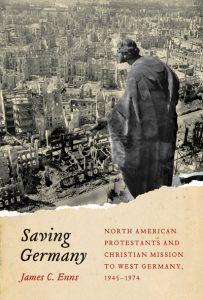 Enns examines a range of Protestant missionary responses to postwar Germany and divides his subjects into three broad categories. Ecumenical missionaries were mainline Protestants who worked primarily through the Religious Affairs Section of the American Military Government in Germany, the World Council of Churches (WCC), and the Church World Service. They were invested primarily in relief and reconstruction, particularly helping to rebuild the Evangelische Kirche Deutschland (the main Protestant church) as a pillar of German society. Denominational missionaries represent the second approach, and here Enns focuses on the Baptists and Mennonites. These denominations used pre-existing ties to their German counterparts and sought to build up these communities and their standing in German society. The third category is conservative evangelical missionaries who worked through independent mission organizations of a mid-century fundamentalist bent. The impact of organizations like Youth for Christ and Janz Team Ministries is not well known and the author does a good job integrating these organizations in the larger narrative.
Enns examines a range of Protestant missionary responses to postwar Germany and divides his subjects into three broad categories. Ecumenical missionaries were mainline Protestants who worked primarily through the Religious Affairs Section of the American Military Government in Germany, the World Council of Churches (WCC), and the Church World Service. They were invested primarily in relief and reconstruction, particularly helping to rebuild the Evangelische Kirche Deutschland (the main Protestant church) as a pillar of German society. Denominational missionaries represent the second approach, and here Enns focuses on the Baptists and Mennonites. These denominations used pre-existing ties to their German counterparts and sought to build up these communities and their standing in German society. The third category is conservative evangelical missionaries who worked through independent mission organizations of a mid-century fundamentalist bent. The impact of organizations like Youth for Christ and Janz Team Ministries is not well known and the author does a good job integrating these organizations in the larger narrative.
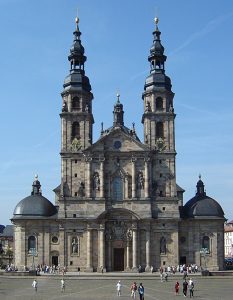
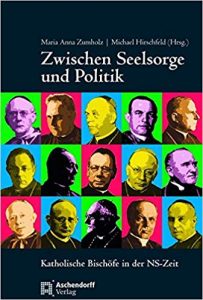 The editors, Maria Anna Zumholz and Michael Hirschfeld, discuss significant forthcoming works on both von Faulhaber and Jaeger to account partly for the brevity of the studies here (13). And while there is a detailed chapter by Raphael Hülsbömer on Vatican Secretary of State Eugenio Pacelli – later Pope Pius XII – and his relations with the German bishops, there is no attempt to integrate the episcopate into Vatican politics or consider the complicated, at times strained relationship between the wartime pope and the bishops as a collective. The editors justify this in part by referencing the closed archives covering the wartime pontificate of Pius XII; they could not have known that the year following this volume’s publication, the Vatican would finally announce the much-anticipated opening of these “secret archives” in 2020.
The editors, Maria Anna Zumholz and Michael Hirschfeld, discuss significant forthcoming works on both von Faulhaber and Jaeger to account partly for the brevity of the studies here (13). And while there is a detailed chapter by Raphael Hülsbömer on Vatican Secretary of State Eugenio Pacelli – later Pope Pius XII – and his relations with the German bishops, there is no attempt to integrate the episcopate into Vatican politics or consider the complicated, at times strained relationship between the wartime pope and the bishops as a collective. The editors justify this in part by referencing the closed archives covering the wartime pontificate of Pius XII; they could not have known that the year following this volume’s publication, the Vatican would finally announce the much-anticipated opening of these “secret archives” in 2020. Though these occurrences are notable in nature and unique in theological understanding, they share a supernatural commonality that O’Sullivan recounts as events of “miraculous faith” (4). O’Sullivan rightly argues that historians, even those who specialize in church history, have for too long neglected incidents of miraculous faith in their analysis of German history. In his fascinating study, O’Sullivan endeavors to fill this void. For him, miraculous faith events both reflect and intensify the institutional, political, cultural, and gender tensions within German Catholicism.
Though these occurrences are notable in nature and unique in theological understanding, they share a supernatural commonality that O’Sullivan recounts as events of “miraculous faith” (4). O’Sullivan rightly argues that historians, even those who specialize in church history, have for too long neglected incidents of miraculous faith in their analysis of German history. In his fascinating study, O’Sullivan endeavors to fill this void. For him, miraculous faith events both reflect and intensify the institutional, political, cultural, and gender tensions within German Catholicism. The suppression of the Bruderhof in Nazi Germany was not unobserved in Britain: there were protests and interventions by figures as diverse as the eminent Anglican laymen Sir Wyndham Deedes and the Baptist internationalist J.H. Rushbrooke. Friends of all kinds now proved effective, particularly in practicalities. By May 1936, the Bruderhof could be found in a farm near Ashton Keynes in the Cotswolds where a new community comprised sixteen Germans, fourteen British friends, and one Austrian. At the height of its quiet prosperity there, in October 1939, the community included as many as 119 Germans, 116 British members, 30 Swiss, 17 Austrians, and stray individuals from the Netherlands, Czechoslovakia, France, Sweden, Italy, and Turkey. All came with their own stories and for their own reasons. All sought to be useful. A miner from the coalfields of Durham cycled three hundred miles to join them and was promptly set to work picking potatoes; another new arrival was a Lancashire poultry farmer who was also a Methodist lay preacher and admirer of the Indian Christian mystic Sundar Singh. In choosing the Cotswolds, a deeply rural area which possessed something of the character of an English arcadia, the community chose well. Birmingham, the second city of the country and a bastion of Quakerism and Free church life and worship, was not far away. Ashton Keynes also had a railway station. Visitors and longer-term guests could come and go as they chose – and they did.
The suppression of the Bruderhof in Nazi Germany was not unobserved in Britain: there were protests and interventions by figures as diverse as the eminent Anglican laymen Sir Wyndham Deedes and the Baptist internationalist J.H. Rushbrooke. Friends of all kinds now proved effective, particularly in practicalities. By May 1936, the Bruderhof could be found in a farm near Ashton Keynes in the Cotswolds where a new community comprised sixteen Germans, fourteen British friends, and one Austrian. At the height of its quiet prosperity there, in October 1939, the community included as many as 119 Germans, 116 British members, 30 Swiss, 17 Austrians, and stray individuals from the Netherlands, Czechoslovakia, France, Sweden, Italy, and Turkey. All came with their own stories and for their own reasons. All sought to be useful. A miner from the coalfields of Durham cycled three hundred miles to join them and was promptly set to work picking potatoes; another new arrival was a Lancashire poultry farmer who was also a Methodist lay preacher and admirer of the Indian Christian mystic Sundar Singh. In choosing the Cotswolds, a deeply rural area which possessed something of the character of an English arcadia, the community chose well. Birmingham, the second city of the country and a bastion of Quakerism and Free church life and worship, was not far away. Ashton Keynes also had a railway station. Visitors and longer-term guests could come and go as they chose – and they did.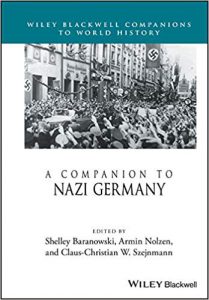 In just 13 pages Manfred Gailus gives an overview of the Christian churches and religious identity and practice in Germany during the 12 years of Nazi rule. Rather than placing the Kirchenkampf and an assessment of the Catholic hierarchy at the centre of this narrative, Gailus paints a picture in which several diverse religious groups quarreled and competed with each and with the state. In addition to the Deutsche Christen, the Confessing Church, and the Catholic Church, he discusses the Free Churches, other small independent religious communities (Adventists, Quakers, Jehovah’s Witnesses, etc.), and völkisch ‘new pagan’ groups (including the German Faith Movement and the Ludendorff movement). These völkisch-religious groups, whose proponents were called “German Believers,” need to be differentiated from the similarly-named “Believers in God” (a new label for those ardent Nazis who had left the church).
In just 13 pages Manfred Gailus gives an overview of the Christian churches and religious identity and practice in Germany during the 12 years of Nazi rule. Rather than placing the Kirchenkampf and an assessment of the Catholic hierarchy at the centre of this narrative, Gailus paints a picture in which several diverse religious groups quarreled and competed with each and with the state. In addition to the Deutsche Christen, the Confessing Church, and the Catholic Church, he discusses the Free Churches, other small independent religious communities (Adventists, Quakers, Jehovah’s Witnesses, etc.), and völkisch ‘new pagan’ groups (including the German Faith Movement and the Ludendorff movement). These völkisch-religious groups, whose proponents were called “German Believers,” need to be differentiated from the similarly-named “Believers in God” (a new label for those ardent Nazis who had left the church).